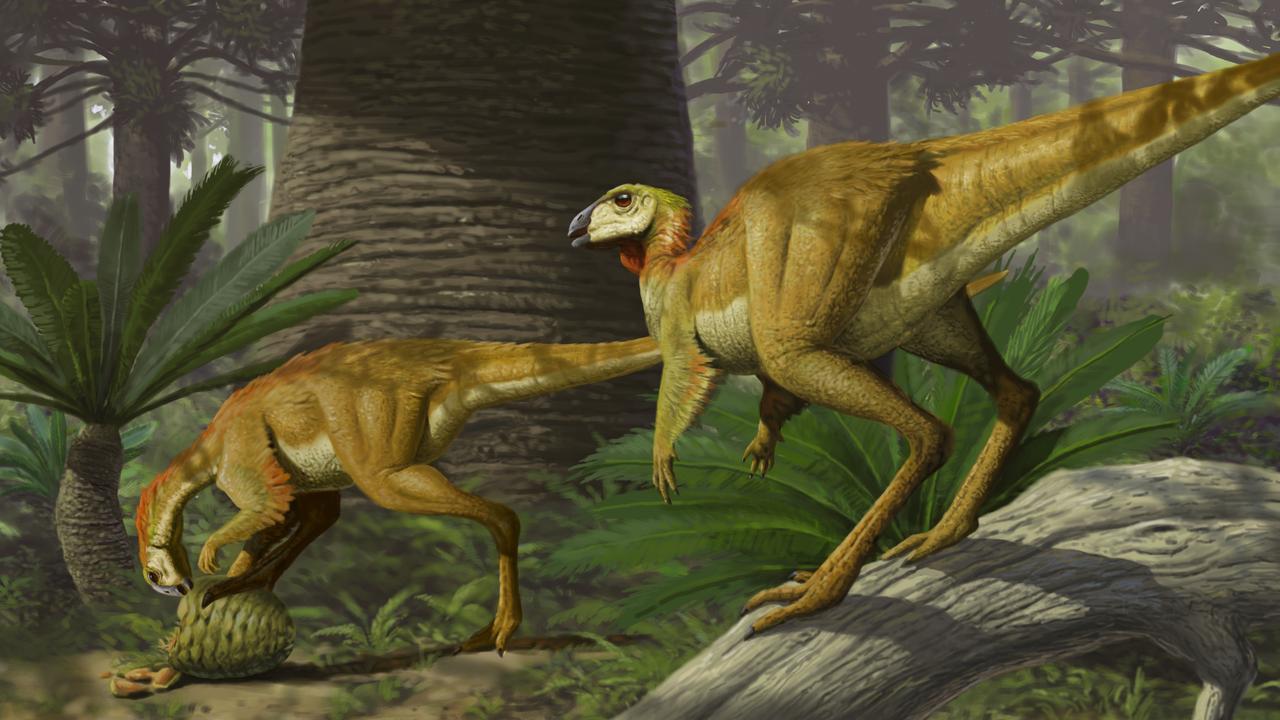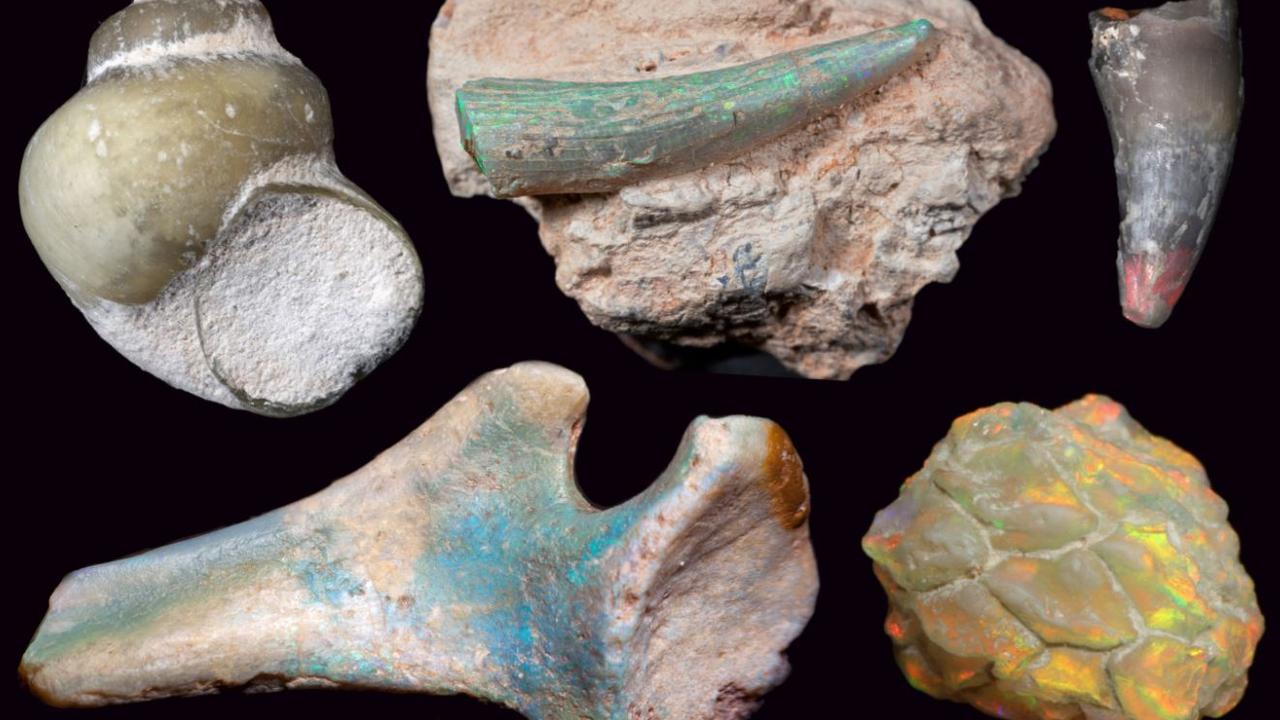CT scans and 3D printing reconstruct herbivore preserved in Lightning Ridge opal
Preserved in Lightning Ridge opal, a small herbivore more than 100 million years old is being reconstructed by palaeontologists using a cutting-edge micro-CT scanner and 3D printing technology

READING LEVEL: GREEN
Palaeontologists* from Flinders University are using a micro-CT scanner* and 3D* printing to reconstruct a small dinosaur preserved as opal* for more than 100 million years.
The researchers are using the latest technology to look inside lumps of white sandstone rock that contain the opal remains of a small dinosaur.
The dinosaur in question is a plant-eating hypsilophodont – a small, running herbivore* – from Lightning Ridge in NSW, that was saved for science back in 2019.

“Once we have reconstructed the scans into 3D virtual models, we can print them out with a 3D printer so we can see the bones still hidden inside the rock,” said lead researcher Associate Professor Paul Willis, from the university’s College of Science and Engineering.

Fossils from Lightning Ridge are often preserved as colourless and valueless potch, or common opal, but occasionally they can be composed of precious opal, including the prized black opal.
Prof Willis said all fossil specimens were “priceless” to palaeontologists and using the latest technology would take much of the guesswork out of understanding the ancient animal’s story.

Prof Willis said recent scans of some of the pieces salvaged by opal miners at Lightning Ridge showed the bone inside was preserved in exquisite* detail.
“Not only do the scans allow us to better understand exactly what we have as a dinosaur skeleton, they will be an invaluable* aid to the next stage of studying this specimen, by removing the surrounding rock,” he said.

“Prior to using scans on specimens like this, the removal of surrounding rock was very much a case of ‘doing in blind’, feeling our way in to reveal the bones.”
“Now we can do that with more confidence because we know where the rock stops and the bone starts.”

Only 20 per cent of the specimens have been scanned so far as part of the study which is being done in conjunction with the Australian Opal Centre at Lightning Ridge and the Palaeo Pictures documentary team led by Prof Willis.
Once complete, a detailed study of the skeleton, assisted by the scan data, will reveal if this is a new species of dinosaur, as well as details about how it lived and died.

GLOSSARY
- palaeontologists: scientists who study fossil for information about the history of life on Earth
- micro-CT scanner: imaging technology using X-rays to see inside an object slice by slice
- 3D: three-dimensional, having length, width and depth, being solid rather than flat
- opal: gemstone that reflects changing colours and is used in jewellery
- herbivore: plant-eating species that do not eat meat
- exquisite: very beautiful, flawless, elaborate
- invaluable: extremely useful, indispensable, of great significance
EXTRA READING
Entire herd of dinosaurs found in Australia
Young dinosaur was crocodile’s last meal
World’s smallest dinosaur found embedded in amber
QUICK QUIZ
- How old is the small dinosaur preserved in opal?
- What can researchers do once they have reconstructed scans into 3D virtual models?
- Fossils from Lightning Ridge are preserved in what range of stone?
- Recent scans of some of the salvaged pieces showed what?
- What percentage of the specimens have been scanned so far?
LISTEN TO THIS STORY
CLASSROOM ACTIVITIES
1. Dinosaur fossil
How do you think information from the fossil and scan data gives researchers information such as how it lived and died?
What sort of value would be added to this dinosaur fossil if it contained some precious opal?
Time: allow 20 minutes to complete this activity
Curriculum Links: English; History; Science; Critical and Creative Thinking
2. Extension
How does technology such as this micro-CT scanner and 3D printer add further information and detail to palaeontologists research?
Time: allow 10 minutes to complete this activity
Curriculum Links: English; History; Science; Critical and Creative Thinking
VCOP ACTIVITY
Stretch your sentence
Find a “who” in the cartoon – a person or an animal. Write it down.
Add three adjectives to describe them better.
Now add a verb to your list. What are they doing?
Add an adverb about how they are doing the action.
Using all the words listed, create one descriptive sentence.

